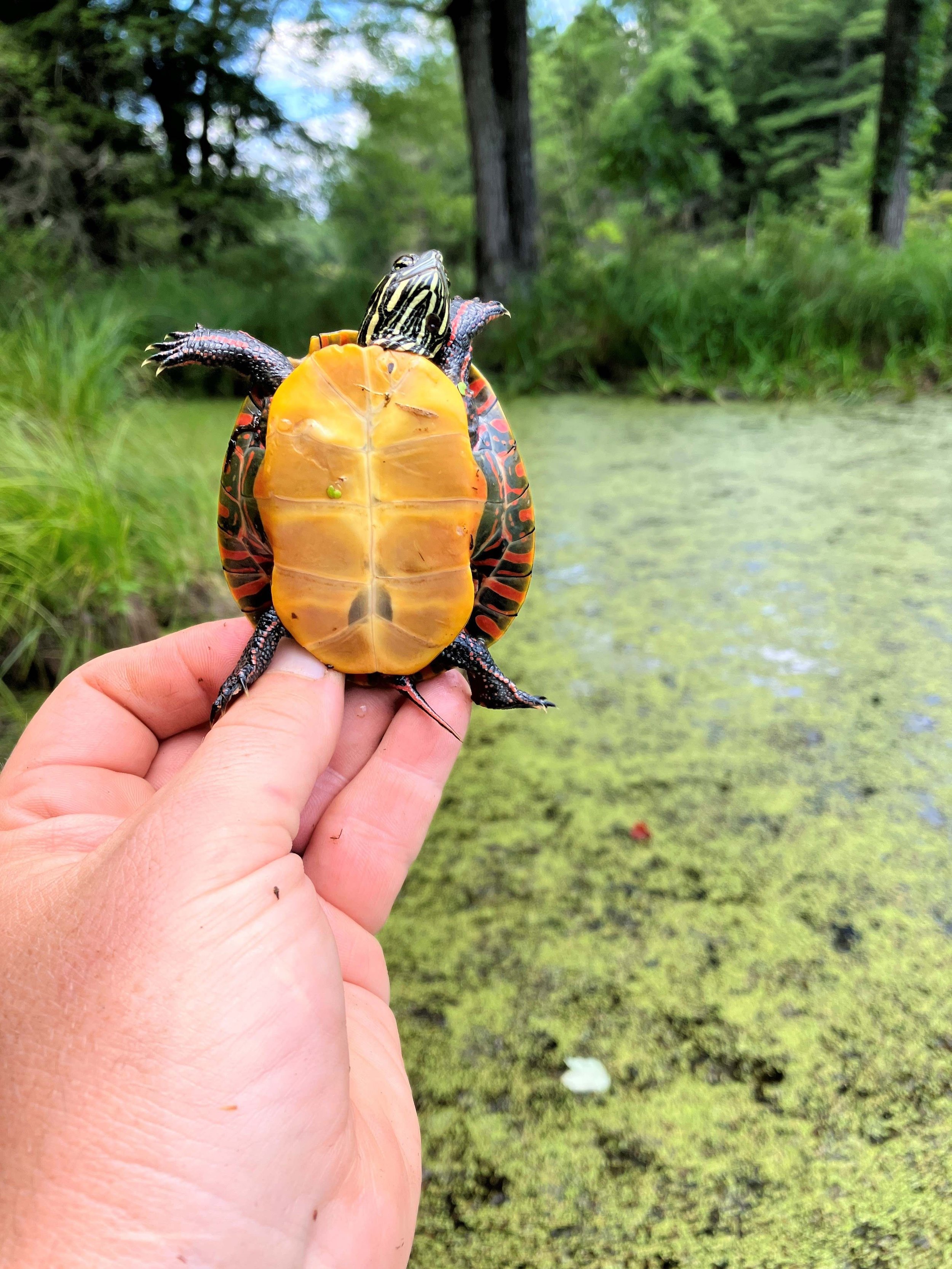Vt. Fish & Wildlife: Leave wild turtles alone
April 29, 2024 | By Vermont Fish & WildlifeA painted turtle found in 2022 in Vernon, Vermont. VTF&W photo by Luke Groff
As amphibians and reptiles are on the move in springtime, the Vermont Fish and Wildlife Department reminds the public that keeping native turtles as pets is prohibited because it can harm turtles and threaten wild turtle populations.
“Capturing a wild turtle and keeping it as a pet, even if only for a short time, is not only bad for that individual turtle, but it could hurt entire turtle populations as well,” said Vermont Fish and Wildlife herpetologist Luke Groff. “Releasing captured turtles back into the wild can spread wildlife diseases and also affect the genetics of the local population.”
Groff explains that adult turtles usually have well-defined home ranges and know where to find food, mates and shelter. However, a turtle released in unfamiliar habitat may roam great distances, increasing the odds it will cross roads and risk being run over.
For turtles, the loss of even a couple mature females can have serious consequences because they are slow to develop, especially at northern latitudes where the growing season is short.
This snapping turtle was photographed by Luke Groff in 2021 in Rupert. VTF&W photo
“Many of Vermont’s turtle species do not reproduce until they are at least 10 years of age,” Groff said, “and older, sexually mature females are critical to the long-term persistence of some of Vermont’s turtle populations.”
Two common species people are likely to see are the Painted Turtle and Snapping Turtle. The Wood Turtle, Spotted Turtle and Spiny Softshell are rare in Vermont, and the state wildlife officials urge the public to report sightings of these species to the Vermont Reptile and Amphibian Atlas (vtherpatlas.org).
If you see some of Vermont’s native turtles in the wild, feel free to take a photo home with you, but leave the turtles in the wild, Groff said.
Find more information on Vermont’s native turtle species on Vermont Fish and Wildlife’s website; contact Groff at Luke.Groff@vermont.gov.


